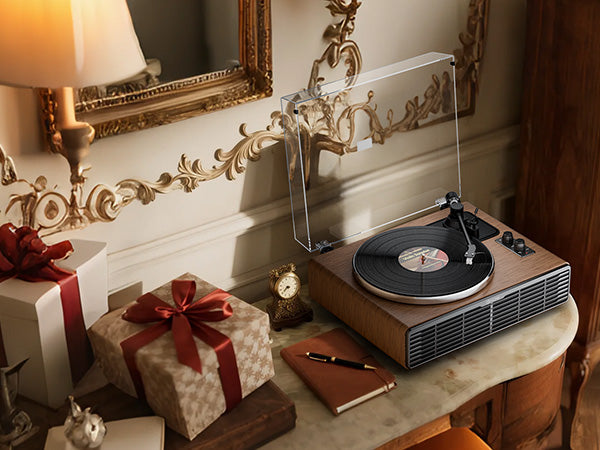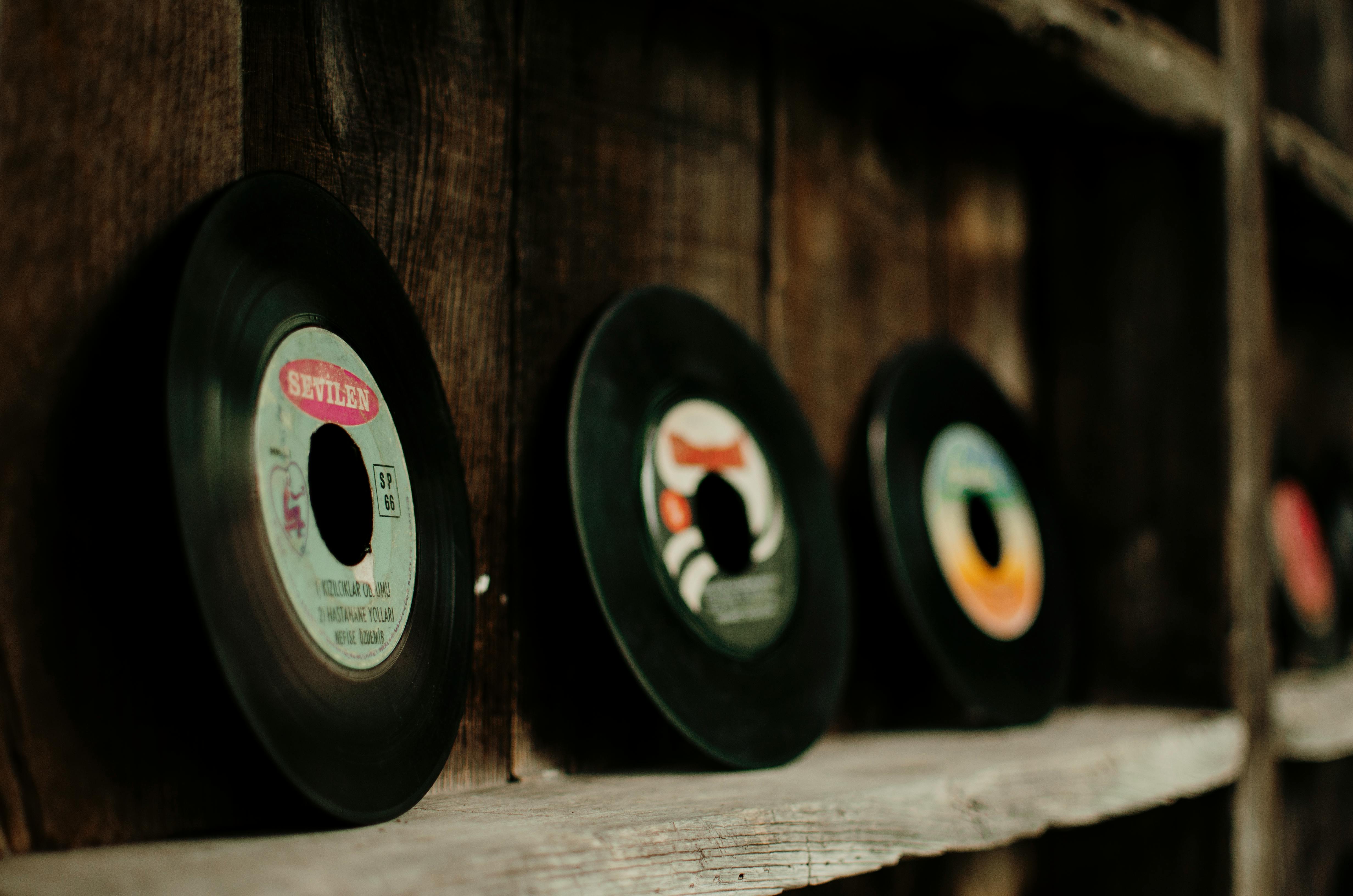The studio is quiet, but not silent. There’s the scent of paper, graphite, and clean ink. On a large drawing board, a blank page awaits—a panel that needs to explode with action. The artist stands, stretches, and walks not to a laptop, but to a turntable. They select a record—the epic, genre-blending soundtrack to Shang-Chi and the Legend of the Ten Rings.
The needle drops. As the blend of traditional Chinese instruments and modern 88rising beats fills the room, the artist picks up a pencil. The blank page no longer seems so intimidating. The music is not just background noise; it is a creative partner.
This scene is playing out in art studios around the world. The use of vinyl record players is becoming a cherished ritual for illustrators, inkers, and comic artists. To understand why, one must look beyond the simple act of listening and into the fundamental nature of the creative process itself.
The First Principle: A Resonance of Analog Crafts
At its core, drawing a comic book is an analog act. It is the physical act of a hand guiding a pencil or a pen to make a mark on paper. It's about pressure, texture, and the friction of a line being carved into existence. It is a tactile, human-powered craft.
Playing a vinyl record is its perfect sonic counterpart. It is not an abstraction of ones and zeroes. It is a physical, mechanical process: a diamond stylus tracing a continuous, microscopic groove, converting physical motion into sound.
This shared physicality creates a powerful resonance. The artist is engaged in one analog craft while being fueled by another. The needle carves a path through the groove, and the pencil follows suit on the page. This is a symbiotic relationship that a sterile, frictionless digital playlist can never replicate. The imperfections of the vinyl—the faint surface noise, the subtle warmth—mirror the imperfections of a hand-drawn line, creating a sense of organic, unified creation.
The Turntable as a Pacing Tool: The Rhythm of A-Side/B-Side
The modern digital playlist is infinite. It is a seamless, endless stream designed to eliminate silence and decision. For a creative trying to focus, this can be a subtle trap, a form of low-grade distraction that prevents deep immersion.
A vinyl record, by its very design, offers a solution: structured focus.
An LP side is typically 18-22 minutes long. This creates a natural, predictable block of time for deep work. The artist knows they have until the end of Side A to finish sketching a page or inking a character. It's a pacer for the soul. The silence that follows the end of the side is not an interruption; it's a built-in reminder to stand up, stretch, look at the work from a distance, and reset. The physical act of flipping the record becomes a deliberate break, a moment of mindful transition before diving back in. This rhythm—work, pause, flip, work—is far more conducive to long, healthy creative sessions than the endless, hypnotic flow of a digital stream.
Sonic World-Building: Hearing the Character's Voice
Choosing an album is an intentional act. When an artist drawing Shang-Chi puts on the official soundtrack, they are not just looking for background music. They are importing the emotional and cultural DNA of the character directly into their workspace.
Joel P. West's score, with its heroic orchestral movements, and the curated soundtrack, with its confident hip-hop beats, provide a sonic blueprint for the world.
-
Need to draw a high-impact fight scene? The driving rhythm of "Run It" can inform the kinetic energy of the artist's lines.
-
Struggling with a quiet, emotional character moment? The score’s more traditional, reflective cues can help set the internal mood.
The music becomes an environmental tool, helping the artist to not just draw what a character looks like, but to feel what it's like to be in their world.
This experience is amplified by a quality turntable. The clarity and detail provided by a good system are essential. An artist needs to hear the texture of the instruments, not a muddy soup of sound. A turntable like the XJ-HOME Recoder is ideal for a studio environment. Its stable, low-noise platform ensures that no distracting rumble or hum breaks the artist's flow state. Its precise tonearm and cartridge can excavate the details from the groove, delivering the full emotional impact of the score. It’s a professional tool for a creative professional, designed to deliver inspiration, not interference.
Conclusion: The Artist's Ally
The turntable in an art studio is more than a retro affectation. It is a powerful, functional tool that respects and enhances the creative process. It provides a tactile, analog counterpart to the artist's own craft. It structures time and focus. It injects the very soul of a fictional universe into the physical space where that universe is being brought to life on the page.
It is a silent partner, a pacing coach, and a direct line to the heart of the story. And for the artist seeking to make their mark, it is an invaluable ally.
Understanding Check: Questions & Answers
1. Question: The article argues that a core reason artists use vinyl is the "resonance of analog crafts." What does this mean, and why does this connection not exist with a digital music source?
Answer: "Resonance of analog crafts" refers to the symbiotic relationship between two physical, tactile processes. Drawing comics is a physical act of making marks on a surface. Playing vinyl is a physical act of a needle tracing a groove. The artist's brain recognizes this shared physicality, creating a harmonious and non-distracting work environment. A digital music source is an abstraction—data being converted to sound without a visible, tangible mechanical process. It lacks the friction, the physical motion, and the tactile feedback of vinyl. This break in the "analog chain" means it serves only as auditory input, whereas vinyl serves as both auditory and subconscious physical input, creating a deeper, more resonant connection with the artist's own work.
2. Question: Explain how the physical format of a vinyl record (with Side A and Side B) can be a more effective productivity tool for an artist than an infinite digital playlist.
Answer: The vinyl format imposes a structure of focused work intervals. A single side of an LP lasts about 20 minutes, creating a natural "sprint" for deep focus. The artist can work without interruption for a defined period. The silence at the end of the side acts as a non-intrusive alarm, signaling a natural break point. The physical act of getting up to flip the record forces a pause, encouraging the artist to stretch, reassess their work, and prevent creative burnout. An infinite digital playlist, by contrast, provides no such structure. It can lead to a state of continuous, low-grade distraction and makes it harder to take intentional, restorative breaks.
3. Question: If an artist is drawing a dynamic fight scene for a comic like Shang-Chi, how might listening to the soundtrack on a high-quality turntable directly influence their artistic choices on the page?
Answer: The soundtrack provides a direct emotional and rhythmic blueprint. Listening on a high-quality turntable would deliver the music with clarity and impact. The driving bass and crisp percussion from a track like "Run It" could directly influence the artist's line work, encouraging them to use faster, more energetic, and more angular strokes. The dynamic swells in the orchestral score could inspire the panel layout, suggesting a shift from a small, tight panel to a large, explosive splash page to mirror the musical crescendo. The clarity of the individual instruments allows the artist to "hear" the different layers of the action, potentially inspiring them to add more detail and complexity to the background or the choreography of the fight itself. The music becomes a direct collaborator in pacing and visual rhythm.





Leave a comment
All comments are moderated before being published.
This site is protected by hCaptcha and the hCaptcha Privacy Policy and Terms of Service apply.